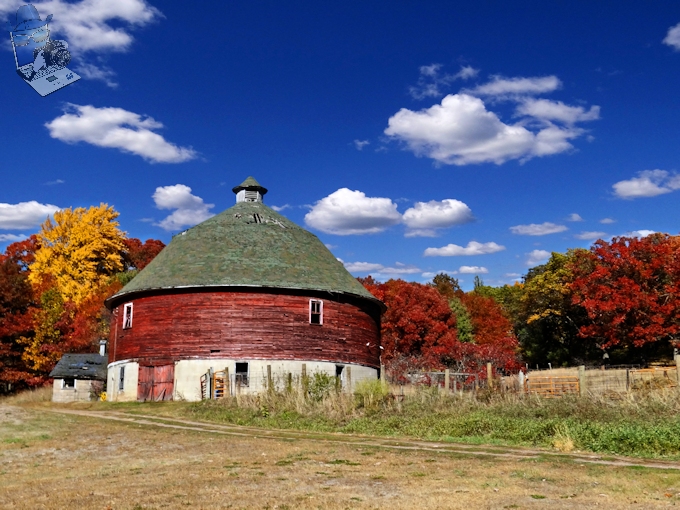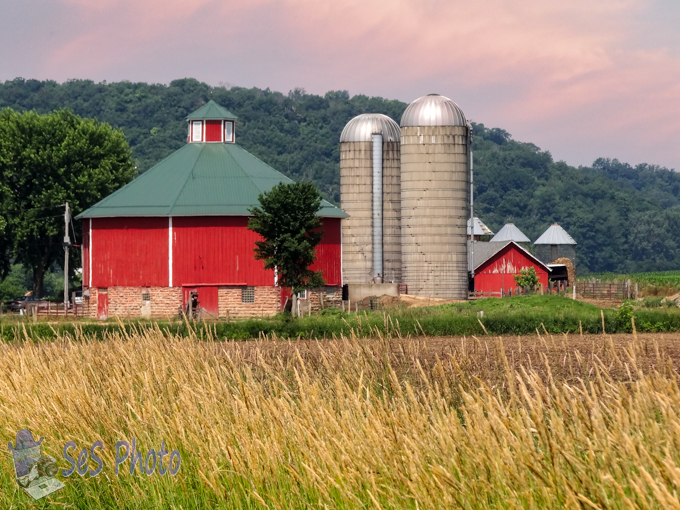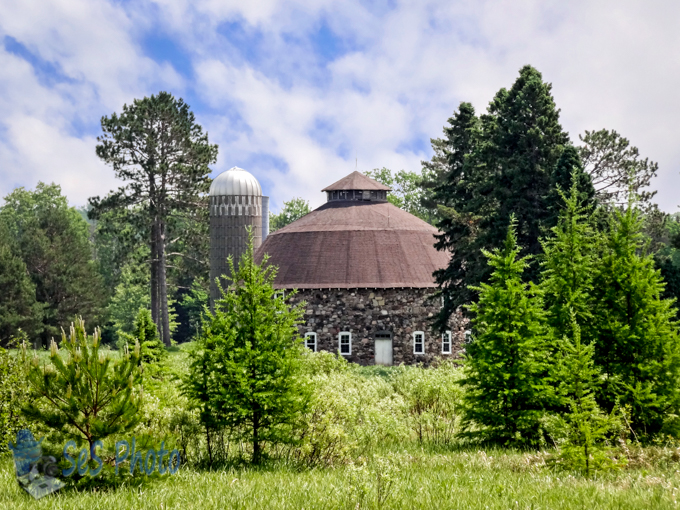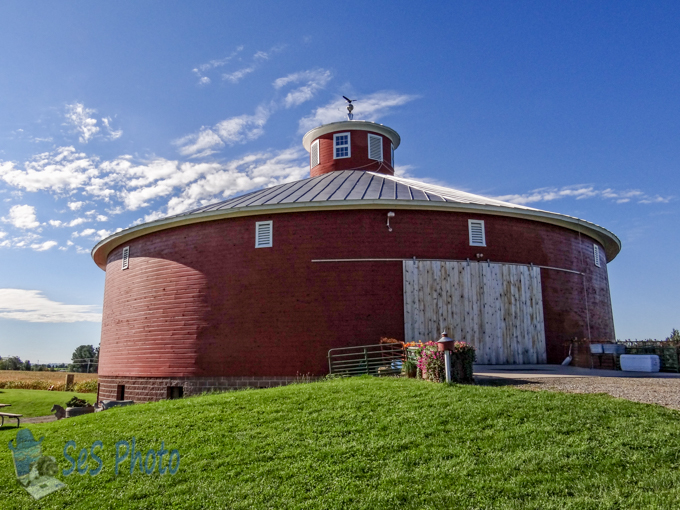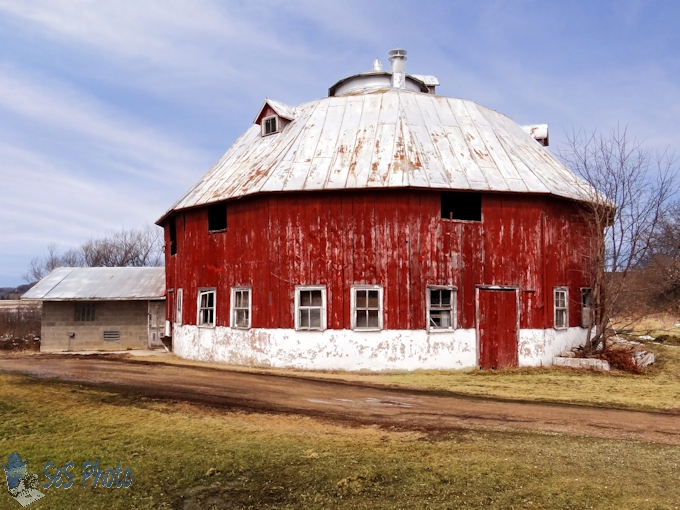A round barn is a historic barn design that could be octagonal, polygonal, or circular in plan. Though round barns were not as popular as some other barn designs, their unique shape makes them noticeable. The years from 1880–1920 represented the height of round barn construction, especially in the Midwest.
George Washington designed and built a sixteen-sided threshing barn at his Dogue Run Farm in Fairfax County, Virginia in 1793. It is considered the first American round barn.
Round barns were cheaper to construct than similar-sized square or rectangular barns because they required less materials. Agricultural colleges began to push the design in the 1880s as they taught progressive farming methods, based on the principles of industrial efficiency.
The spread of machinery, especially with the Rural Electrification program, eliminated the advantages of labor-saving designs that were more complicated to build, and the popularity of round barns faded.
The list of current round barns in Wisconsin show only this one in Washburn county and I was able to visit it this week with help of a relative driving me to it, so a special thanks to Roger for the fall driving tour pass the round barn which was built in 1918.
Washburn County Round Barn
